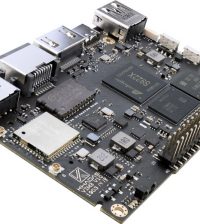- makeITcircular 2024 content launched – Part of Maker Faire Rome 2024Posted 2 weeks ago
- Application For Maker Faire Rome 2024: Deadline June 20thPosted 2 months ago
- Building a 3D Digital Clock with ArduinoPosted 7 months ago
- Creating a controller for Minecraft with realistic body movements using ArduinoPosted 7 months ago
- Snowflake with ArduinoPosted 8 months ago
- Holographic Christmas TreePosted 8 months ago
- Segstick: Build Your Own Self-Balancing Vehicle in Just 2 Days with ArduinoPosted 8 months ago
- ZSWatch: An Open-Source Smartwatch Project Based on the Zephyr Operating SystemPosted 9 months ago
- What is IoT and which devices to usePosted 9 months ago
- Maker Faire Rome Unveils Thrilling “Padel Smash Future” Pavilion for Sports EnthusiastsPosted 10 months ago
6 ways to calculate ROI for open hardware projects

Every Maker, sooner or later, comes to a point when he starts thinking if his latest creation could have a commercial value, can be sold, has a market. In this case, rather than discovering the potential market, the big issue is on establishing how much is the project worth and which cloud be the price point. Opensource.com publishes a nice thumb-rule (or better, 6 possible ways) to estimate that:
6 steps to calculate ROI on open hardware
- Post your FOSH design on a website or open source repository that enables you to track downloads. Just as it is rare for people to download open source software and not use it, it is also rare for makers to download hardware designs without building at least one. It is true that downloading a design does not guarantee manufacturing, though on the other hand, a single download could be fabricated many times, traded via email, memory stick, or posted on P2P websites that are beyond conventional tracking. Thus, conservatively you can assume that each download is equivalent to one make.
- Determine the costs to make your FOSH design by summing the costs for the BOM and including any labor costs. If it is a DIY project then the labor cost is normally considered zero.
- Determine the cost to purchase an equivalent (or nearly equivalent if none exist) proprietary product.
- Subtract the cost to make your FOSH from the cost to buy the equivalent—this is how much each download saves.
- Multiply the savings per download by the total number of downloads to obtain the worldwide value at the time you do the analysis.
- Finally, calculate the ROI for your investor by subtracting the investment from your worldwide value and then dividing the remainder by the investment and multiplying the result by 100%.
As an example, here is how to evaluate a laptop desk:
The open source laptop stand costs about $30 to make and replaces a commercial equivalent that costs about $80, so the savings are $50 per download. The 864 downloads to date have created a global savings of $43,200 for the makers who are using it. This is real value for real people.
The design was developed by an undergraduate engineering student, so let’s imagine what the ROI would be for someone like the NSF if they were funding an open source hardware project for their undergraduate summer program REU. A student’s project might be focused on engineering applications that improve human health, and they might receive a summer salary of $5,000. In this case, such an investment in a simple little project would provide an 764% ROI for the global community. This is more than 100 times what one would expect if the same money was invested in a diversified stock market portfolio. This is also excluding all the normal return such research experiences provide (e.g. a smarter better trained student) and any subsequent furthering of science or engineering (e.g. the use of virgin 3D printer filament as a joint lock is a particularly clever aspect of this design that can be used for many other applications). If this same project was funded by a NPO like the Gates Foundation additional social value might be tallied (e.g. an estimate on the value of the improved health and productivity of the more than 800 people that are using the design).
Here you can find the details on the free open source hardware laptop desk: Learn how to calculate ROI for open hardware projects
















